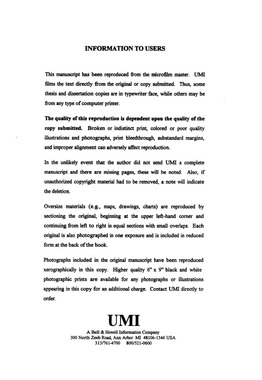| dc.contributor.advisor | Dorica, David S., | en_US |
| dc.contributor.advisor | Gimble, Jeffrey M., | en_US |
| dc.contributor.author | Robinson, Claudius Emet. | en_US |
| dc.date.accessioned | 2013-08-16T12:29:48Z | |
| dc.date.available | 2013-08-16T12:29:48Z | |
| dc.date.issued | 1997 | en_US |
| dc.identifier.uri | https://hdl.handle.net/11244/5507 | |
| dc.description.abstract | The bone marrow stroma is composed of a diverse array of cell types that have unique functions. Of the different types, the adipocyte is the most abundant. It is not clear what purpose adipocytes serve in the bone marrow. They may simply occupy space in the marrow cavity or they may play active roles in systemic lipid metabolism and provide an energy reservoir in the bone marrow. Marrow adipocytes also appear to contribute growth factors and cytokines that directly promote hematopoiesis and influence osteogenesis. The enzyme lipoprotein lipase (LPL) is an early marker of adipogenesis and its regulation is complex. It is the enzyme responsible for the hydrolysis of triglycerides into free fatty acids and the clearance of chylomicrons from the blood. It is regulated by a variety of transcription factors. The nuclear hormone receptor superfamily consists of an immense number of genes and is accepted as the largest transcription factor family in eukaryotes. We determine that peroxisome proliferator activated receptors (PPARs) with their ligands induce adipogenesis in bone marrow stromal cells and that they bind and activate the LPL gene promoter in vitro. The chicken ovalbumin upstream promoter transcription factors (Coup-TFs) are orphan receptors that bind certain DNA direct repeats as homodimers and heterodimers with other steroid receptor molecules such as the retinoid X receptor (RXR) and are accepted as repressors of other nuclear hormone receptors. We determine that Coup-TFs bind the LPL promoter in vitro and demonstrate in cotransfection analysis that they act in concert with the PPAR$\gamma$2 and RXR$\alpha$ proteins to multiplicatively activate its transcription. Recently, new regulatory proteins have been described that affect the interaction of nuclear hormone receptors with the transcriptional apparatus. We determine that the co-regulators of nuclear hormone receptors SMRT (silencing mediator for retinoid and thyroid-hormone receptors) and steroid receptor coactivator (SRC-1) help regulate the LPL promoter in conjunction with PPAR$\gamma$2, RXR$\alpha$ and Coup-TFII (ARP-1) in negative and positive fashion respectively. Improved understanding of the mechanisms regulating stromal adipocyte differentiation may lead to therapeutic interventions that can enhance osteogenesis and hematopoiesis in afflicted individuals. | en_US |
| dc.format.extent | vii, 142 leavves : | en_US |
| dc.subject | Biology, Cell. | en_US |
| dc.subject | Bone marrow cells. | en_US |
| dc.subject | Biology, Molecular. | en_US |
| dc.subject | Hormone receptors. | en_US |
| dc.subject | Chemistry, Biochemistry. | en_US |
| dc.subject | Lipoprotein lipase. | en_US |
| dc.title | An analysis of the activation of the adipogenic differentiation pathway in the bone marrow stroma by members of the nuclear hormone receptor family. | en_US |
| dc.type | Thesis | en_US |
| dc.thesis.degree | Ph.D. | en_US |
| dc.thesis.degreeDiscipline | Department of Biology | en_US |
| dc.note | Source: Dissertation Abstracts International, Volume: 58-05, Section: B, page: 2282. | en_US |
| dc.note | Advisers: David S. Dorica; Jeffrey M. Gimble. | en_US |
| ou.identifier | (UMI)AAI9733701 | en_US |
| ou.group | College of Arts and Sciences::Department of Biology | |
